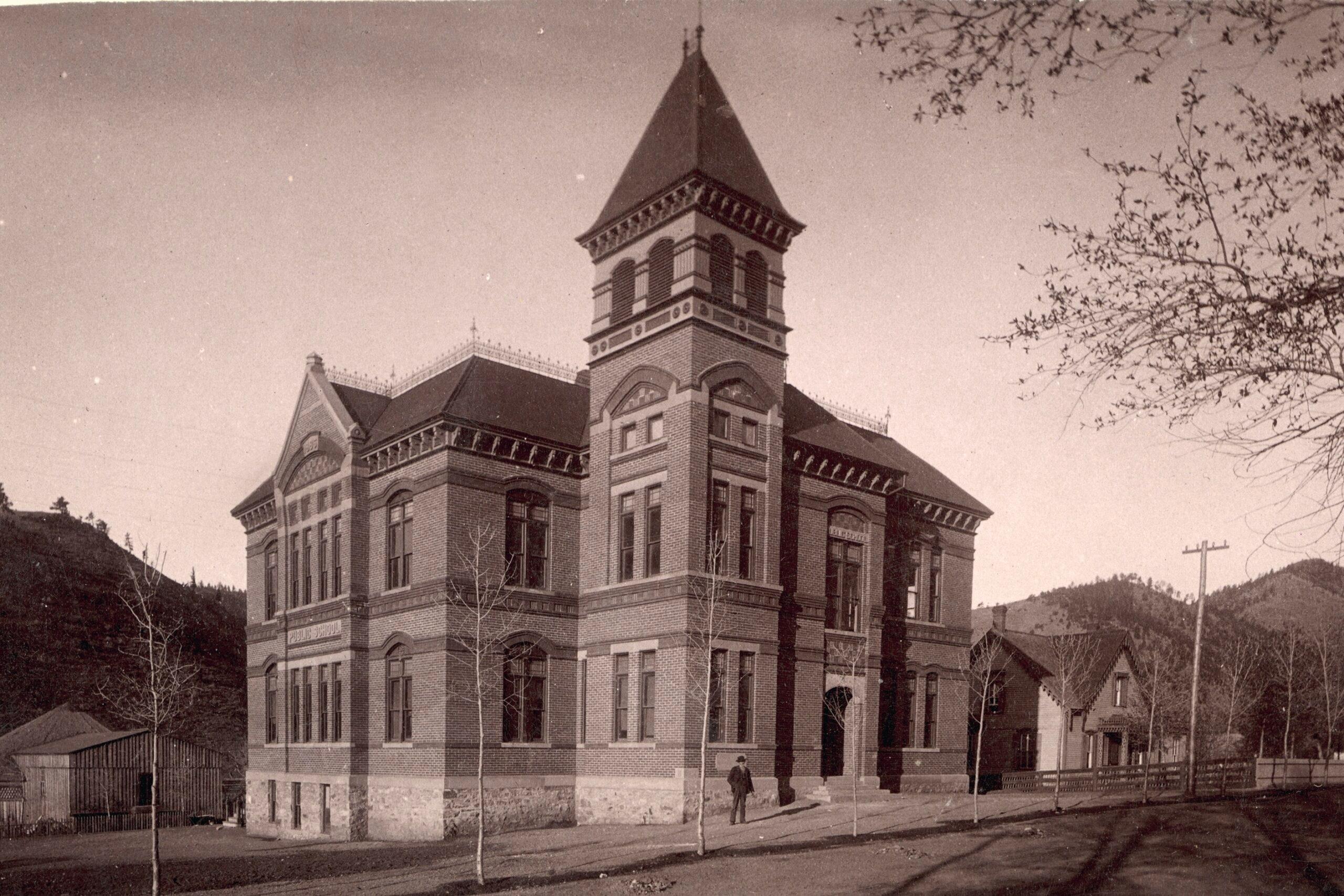
Adams 12 Five Star. Agate 300. Kim Reorganized RE-88. Bayfield 10 JT-R. Big Sandy 100 J. And my all-time favorite: Miami-Yoder JT-60. How did Colorado school districts get these peculiar names? Brendan Keeler asked CPR’s Colorado Wonders that question.
Finding answers was not an easy task. But the good people of Colorado helped me along the way. Still, I don’t know the full answer, but I’m almost certain that someone out there does.
First, a wee bit of history. How did we get all these school districts?
Before Colorado was even a state there were public schools.
Territorial legislation passed in 1861 called for the election of county superintendents of schools and tax-supported school districts, according to “A History of Colorado School District Organization.”
It wasn’t that hard to start a new school district. Parents of 10 — yes 10 — school-age children (that's children ages 6 to 21) could petition county superintendents for elections to establish new school districts. As you can imagine, that led to a lot of school districts: Nearly 700 by 1886. Most only had a single school because children couldn’t travel great distances.
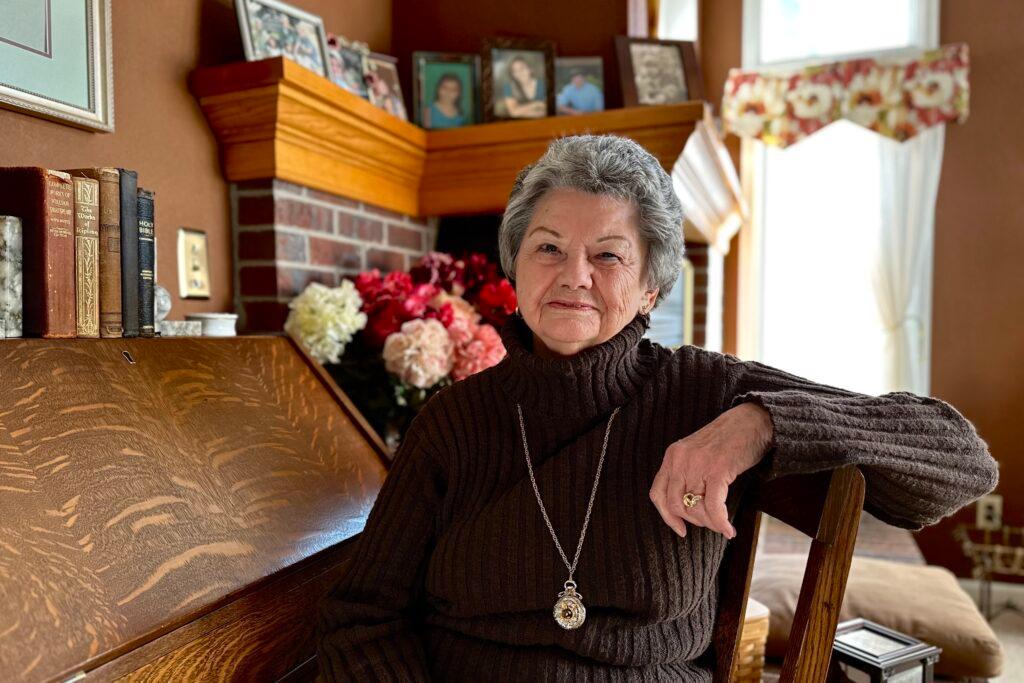
“To get a child to school, they either walked or rode a horse, one of the two,” said Norma Anderson, 90, a former state lawmaker and author of the School Finance Act of 1994. “You’re not going to let a child ride a horse 50 miles to school.”
But the population was growing — the Homestead Act, which provided 160 acres of federal land to anyone who agreed to farm the land and mining brought people to Colorado in droves.
By 1935 there were more than 2,000 school districts in Colorado.
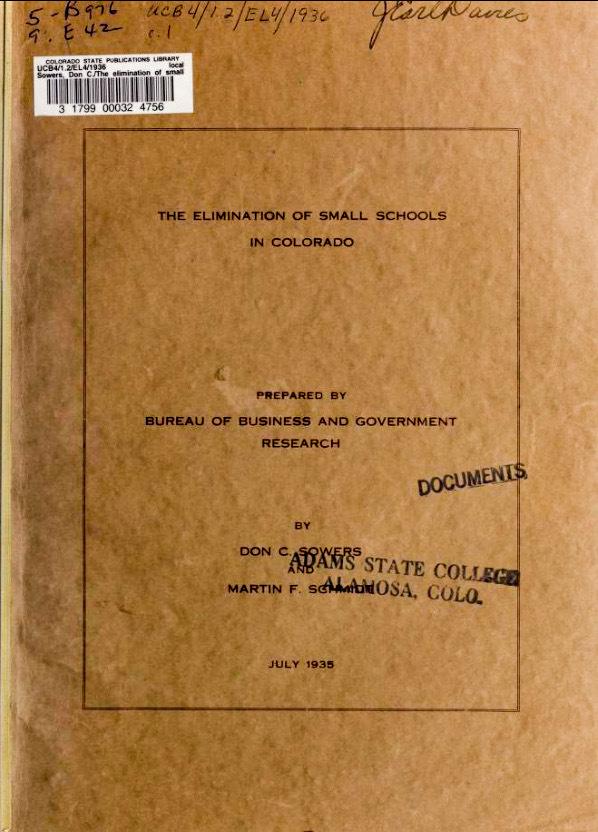
There were 2,105 districts to be exact. Weld County had 123. Las Animas County had 120, while Boulder County had 52 school districts. They were named with a number after the county name, for example, Archuleta 1, 2, 3, 4, 5 and so on (but, oddly, there were no districts 22-24 — I’m not sure what happened to those) according a report from 1935, "The Elimination of Small Schools in Colorado." The report, with dozens of painstakingly typed rows and columns of numbers, was authored by the University of Colorado.
“The small one-room district school is hopelessly inefficient and the thousands of country boys and girls who attend them are deprived of adequate training and equal education advantages which are enjoyed by the boys and girls who attend city schools,” reads the 1935 report.
It said the typical one-room school “doesn’t have sufficient textbooks, playground equipment, up-to-date seating and modern sanitary conveniences.” It costs three times as much to educate a child in a large school. During the Great Depression, many poor and rural schools needed to apply for federal aid in order to keep operating, according to a Colorado State Publications blog.
What came next? Fifty years of reorganizing and consolidating districts!
It took another decade for the Colorado legislature to finally pass the School District Reorganization Act of 1949. Up until then, consolidation was pretty simple. Two or more school boards would meet, maybe have a cup of tea, decide to consolidate, and have an election. In 1949 — with 1,721 school districts — legislators passed the act that made counties appoint committees to study the issue and make a plan before it went to voters.
By 1957, a legislative study called the reorganization of school districts the “number one education problem.” There were still nearly 1,000 school districts, including 203 one-room school districts and 239 school districts that weren’t operating.
“There were school districts going back to territorial days or shortly after that,” said Bill Bregar, a retired educator, principal, board member and former adjunct professor at CSU Pueblo. “They would form a school district for their purposes. Their kids would grow up and the district would stay dormant.”
Around that time state lawmakers recommended no county have more than six school districts and encouraged school districts to have 12 grades. They recommended abolishing school districts that weren’t running schools. (Good idea.)
| YEAR | NUMBER OF COLORADO SCHOOL DISTRICTS |
| 1886 | 685 |
| 1935 | 2,105 |
| 1956 | 967 |
| 1961 | 275 |
| 1965 | 181 |
| 1995 | 176 |
| 2000 | 178 |
To create larger school districts, sometimes old buildings would be moved together.
“There were five buildings plus the old livery stable that made up the school grounds in the town of Stoneham but they used to be in rural settings outside that town probably as far as 6 miles away,” recalled Ray Kilmer, 84, a longtime Colorado educator, superintendent and former deputy commissioner of education.
He was the only student in his graduating class at Stoneham High. “I was the dumbest kid in the class but I was the valedictorian,” he said.
The main reasons for consolidation was education opportunity and economies of scale — it’s less costly to run larger school districts.
Most of the winnowing occurred in the mountain regions and Western Slope, where several countywide school districts were formed, according to the History of Colorado School District Organization report. The Eastern Plains still had many small school districts. El Paso County fiercely resisted school district reorganization.
“Anybody that tried [consolidation] down there has not succeeded,” recalled Anderson. Same with Weld County. “They’ve always been independent up there. Always!”
Over the next few years, the reorganization law was revised a few more times. The number of districts stayed put at 181 for 18 years. Then state lawmakers allowed voters to decide to deconsolidate or split up. Today there are 178 school districts. Eighty-nine school districts have fewer than 500 students.
So, the moment you’ve been waiting for. How did Colorado school districts get their names?
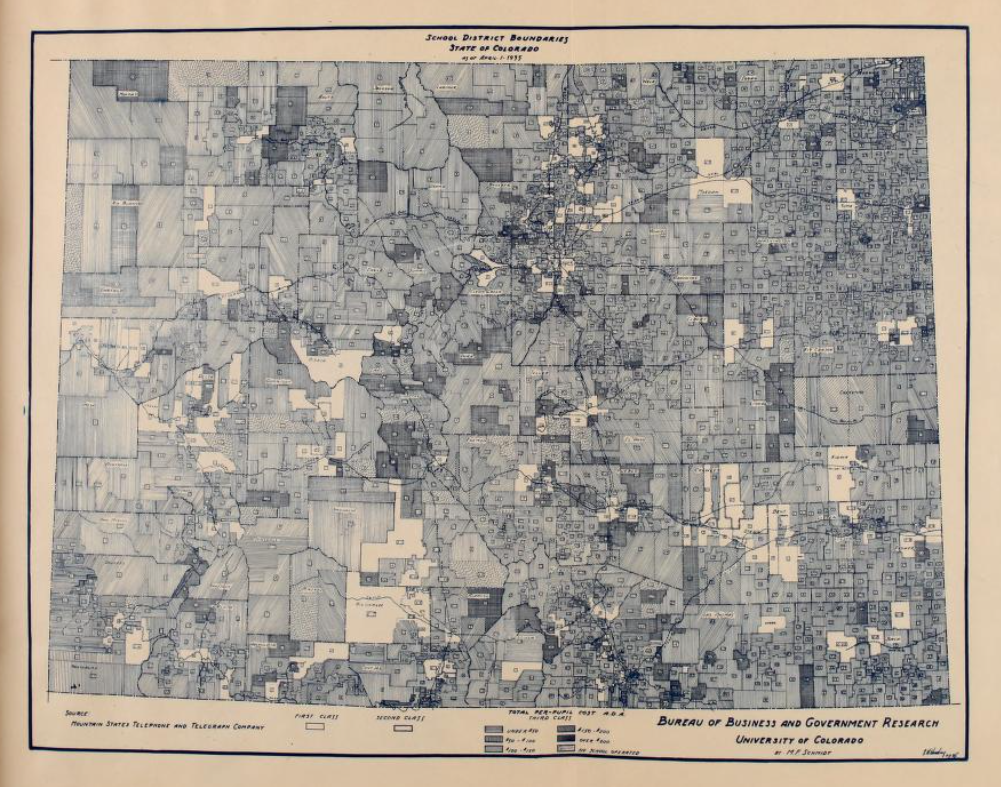
The name
Some large school districts follow county lines. Think Denver (Denver School District No. 1) and Jefferson County (about 39 districts came together in 1950 to form that county-wide district).
Many districts kept the county name or go by the name of the town they are in. But names for others were made up to keep the peace when consolidations happened.
Roaring Fork Schools (in the Roaring Fork Valley), Prairie School District (in the middle of Pawnee National Grasslands), Miami-Yoder JT-60 (though the school district is in the town of Rush, Yoder is a nearby town and some settlers were from Miami, Oklahoma.) Some school district names originated as a combination of the consolidating districts, like Cripple Creek-Victor School District RE-1.
Former state lawmaker Norma Anderson said sometimes a name was “something they just pulled out of the sky. [Local people] got to name their own schools the way they wanted to.”
One name that garners lots of questions is Adams 12 Five Star Schools, which has an entire section on its website about its history. In 1988, the Adams 12 district was renamed Adams 12 Five Star Schools. The number "five" in the name represents the five cities in the district: Broomfield, Federal Heights, Northglenn, Thornton and Westminster. There are five points on a star and of course, “’Five Star’ is commonly known for excellence,” said district spokesperson Joe Ferdani.
The codes or letters after the name
These are a result of the various periods of school district reorganization.
- C – Consolidated (applied after 1949)
- R (after 1953), Re or RE (1959) – Reorganized
- RD – Reorganized/Deconsolidated
- J, Jt, J – Joint, crosses county lines
- RJ, RE-J, Jt-R – Reorganized Joint
For example, Center Consolidated School District 26 JT. It’s in the town of Center and the school district crosses into Saguache, Alamosa and Rio Grande counties. Fowler R-4J is in the town of Fowler, was reorganized at one point and crosses into several counties: Pueblo, Otero, and Crowley.
If a district doesn’t have a letter it means the school district was never reorganized or consolidated with other districts, according to the Colorado State Department of Education.
The number
This is the most confusing part of the name. Everyone we talked to had a different theory.
“Some school district numbers were created from a combination of the consolidating districts,” said one state document. For example, there were nine school districts in this region that were reorganized to form Durango School District 9-R, according to the district.
Many school districts didn’t know the history of the number. Why Agate 300? Where did the 300 come from?
“I can’t find any information about why they have certain numbers,” said Bregar, noting that there are many duplicate “1’s” and “2’s” in the state. Trinidad is 1. Denver is 1. Montezuma-Cortez is 1. Poudre is 1. West Grand is 1.
But remember there were more than 2,000 school districts at one time, so 300 could have been the original number of the district and it survived.
Tom Turrell, the superintendent of Byers 32-J said old-timers told him the 32 is the original school district number. It didn’t get eaten up by other districts. It remained.
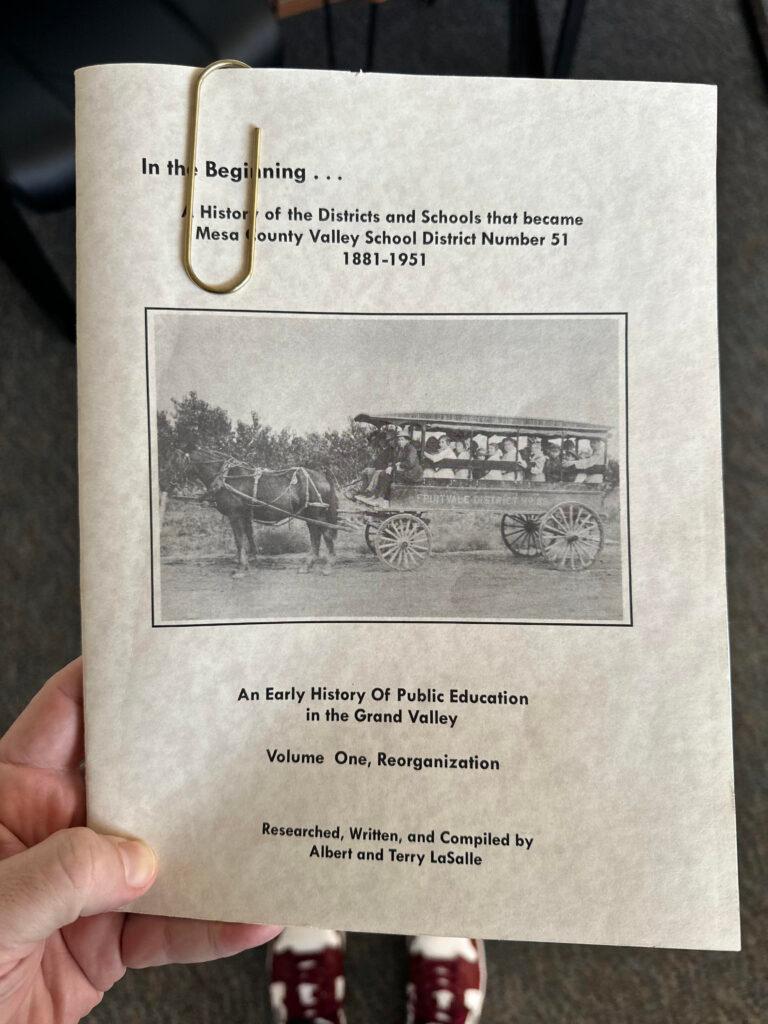
“These are the ones that were left behind that made it through the consolidations,” said Turrell.
Mesa Valley 51 sent us a snippet from a publication called, “In the Beginning … A History of the Districts and Schools that became Mesa County Valley School District Number 51, 1881-1951, Vol. 1, Reorganization.” The number was the order in which the school districts petitioned for recognition from Mesa County. DeBeque 49 was the 49th little district to form in Mesa County, and Mesa was number 51. That makes sense.
But that theory doesn’t seem to hold for all districts. For example, until 2016 Westminster School District was Westminster 50 and before that it was Adams County School District 50. Residents of school districts 9, 25 and 98 voted to become Adams County School 50.
“Numbers aren’t assigned in chronological order since there was a district 98 before there was a district 50,” said district spokesperson Stephen Saunders. “Since the name district 50 had no geographic reference, we needed something to identify where we were (Westminster) and people have accepted it.”
The districts in Weld County, while each has a distinct name, are numbered sequentially from 1 to 12.
Maybe the numbers were added together in some cases. Lewis-Palmer School District 38 was founded in 1874 as Lewis School District 5, according to this article. In the late 1880s Palmer Lake D-33 was created. The two districts merged in 1948. So 5 + 33= 38?
We ran out of time to call Kim Reorganized 88 and Lone Star 101.
At any rate, districts don’t like to consolidate, said Ray Kilmer, who oversaw a consolidation many years ago. In many rural districts, he said, the school is the center of activity.
“Here we identify. We go to watch the plays. We go to watch sports. We don’t want to lose that identity.”








